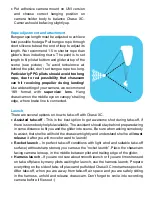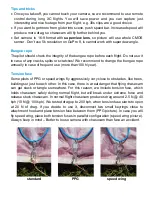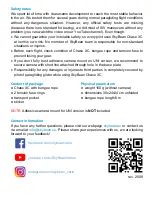
Tips and tricks
Once you takeoff, you cannot touch your camera, so we recommend to use remote
control during long XC flights. You will save power and you can capture just
interesting and nice footage from your flight, e.g. 30s clips are a good choice.
If you want to get more from glider into scene, push speed bar. Increased speed will
produce more drag, so chasecam will fly further behind you.
Set camera to 16:9 format with
superview lens
, so picture will use whole CMOS
sensor. Don
’t use 5k resolution on GoPro 9, is cannot work with superview angle.
Bungee rope
The pilot should check the integrity of the bungee rope before each flight. Do not use it
in case of any cracks, splits or scratches! We recommend to change the bungee rope
annually in case of frequent use (more than 100 h/year).
Tension fuse
Some pilots of PPG or speed wings fly aggressively very close to obstacles, like trees,
buildings or just to each other. In this case, there is a real danger that flying chasecam
can get stuck or tangle somewhere. For this reason, we include tension fuse, which
holds chasecam safely during normal flight, but will break under extreme force and
release stuck chasecam. In normal flight chasecam produces drag around 2.5 N @ 40
kph (10 N @ 100 kph). We tested drag up to 200 kph, when tension fuse starts to open
at 20 N of drag. If you decide to use it, disconnect two small keyrings close to
attachment hook and place tension fuse between them (PPG picture). In case you will
fly speed wing, place both tension fuses in parallel configuration (speed wing picture).
Always keep in mind
– Better to loose camera with chasecam than face an accident.
standard
PPG
speed wing






















